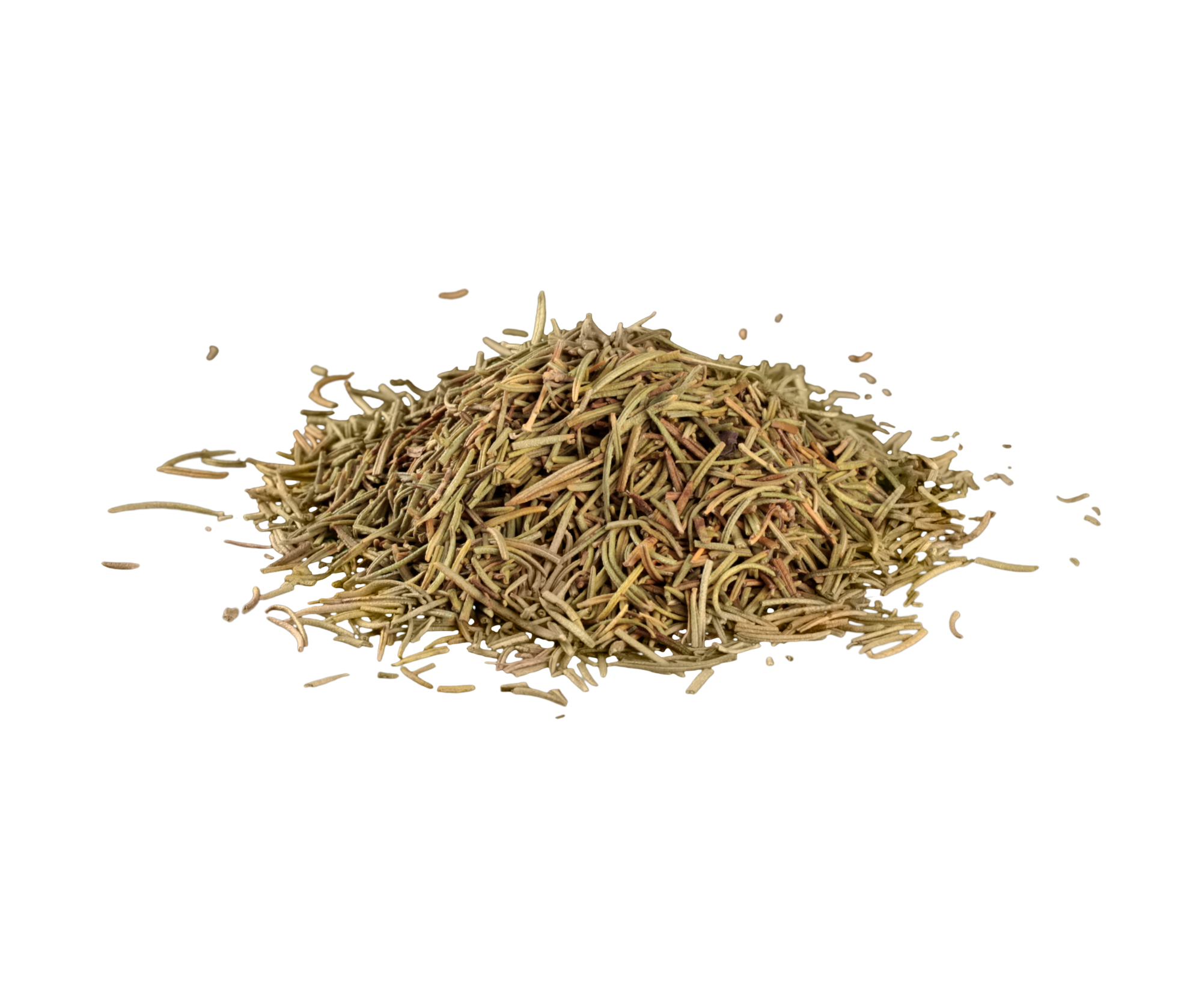Thyme, Whole 2.5 oz
Thyme is a versatile herb that is used in a wide range of culinary applications to add flavor and aroma to dishes. It has a distinct earthy and slightly minty flavor, and its small leaves are often used fresh or dried. Here are some common uses for thyme in cooking:
Savory Dishes: Thyme is a staple herb in savory dishes, such as soups, stews, and sauces. It pairs well with meats, poultry, and fish, enhancing their flavors. It is a key component of classic French herb blends like "bouquet garni" and "herbes de Provence."
Roasted Meats: Thyme is often used to season roasted meats, including roast chicken, turkey, lamb, beef, and pork. It can be added as whole sprigs or used in dry rubs and marinades.
Vegetable Dishes: Thyme adds a savory note to roasted or sautéed vegetables, such as potatoes, carrots, Brussels sprouts, and mushrooms. It can also be used in vegetable soups and casseroles.
Rice and Grain Dishes: Thyme can be added to rice, quinoa, and other grain dishes to infuse them with a subtle herby flavor. It's often used in pilaf recipes.
Tomato-Based Dishes: Thyme is a complementary herb in tomato-based sauces, like marinara and tomato soup. It adds depth and complexity to the flavors.
Stuffing and Dressing: It is commonly used in stuffing or dressing recipes for poultry and holiday dishes, providing an aromatic and herbaceous flavor.
Herb Butter: Thyme can be mixed with softened butter to create a flavorful herb butter. This can be used as a finishing touch for grilled meats, steamed vegetables, or pasta dishes.
Thyme is a versatile herb that is used in a wide range of culinary applications to add flavor and aroma to dishes. It has a distinct earthy and slightly minty flavor, and its small leaves are often used fresh or dried. Here are some common uses for thyme in cooking:
Savory Dishes: Thyme is a staple herb in savory dishes, such as soups, stews, and sauces. It pairs well with meats, poultry, and fish, enhancing their flavors. It is a key component of classic French herb blends like "bouquet garni" and "herbes de Provence."
Roasted Meats: Thyme is often used to season roasted meats, including roast chicken, turkey, lamb, beef, and pork. It can be added as whole sprigs or used in dry rubs and marinades.
Vegetable Dishes: Thyme adds a savory note to roasted or sautéed vegetables, such as potatoes, carrots, Brussels sprouts, and mushrooms. It can also be used in vegetable soups and casseroles.
Rice and Grain Dishes: Thyme can be added to rice, quinoa, and other grain dishes to infuse them with a subtle herby flavor. It's often used in pilaf recipes.
Tomato-Based Dishes: Thyme is a complementary herb in tomato-based sauces, like marinara and tomato soup. It adds depth and complexity to the flavors.
Stuffing and Dressing: It is commonly used in stuffing or dressing recipes for poultry and holiday dishes, providing an aromatic and herbaceous flavor.
Herb Butter: Thyme can be mixed with softened butter to create a flavorful herb butter. This can be used as a finishing touch for grilled meats, steamed vegetables, or pasta dishes.
Thyme is a versatile herb that is used in a wide range of culinary applications to add flavor and aroma to dishes. It has a distinct earthy and slightly minty flavor, and its small leaves are often used fresh or dried. Here are some common uses for thyme in cooking:
Savory Dishes: Thyme is a staple herb in savory dishes, such as soups, stews, and sauces. It pairs well with meats, poultry, and fish, enhancing their flavors. It is a key component of classic French herb blends like "bouquet garni" and "herbes de Provence."
Roasted Meats: Thyme is often used to season roasted meats, including roast chicken, turkey, lamb, beef, and pork. It can be added as whole sprigs or used in dry rubs and marinades.
Vegetable Dishes: Thyme adds a savory note to roasted or sautéed vegetables, such as potatoes, carrots, Brussels sprouts, and mushrooms. It can also be used in vegetable soups and casseroles.
Rice and Grain Dishes: Thyme can be added to rice, quinoa, and other grain dishes to infuse them with a subtle herby flavor. It's often used in pilaf recipes.
Tomato-Based Dishes: Thyme is a complementary herb in tomato-based sauces, like marinara and tomato soup. It adds depth and complexity to the flavors.
Stuffing and Dressing: It is commonly used in stuffing or dressing recipes for poultry and holiday dishes, providing an aromatic and herbaceous flavor.
Herb Butter: Thyme can be mixed with softened butter to create a flavorful herb butter. This can be used as a finishing touch for grilled meats, steamed vegetables, or pasta dishes.

